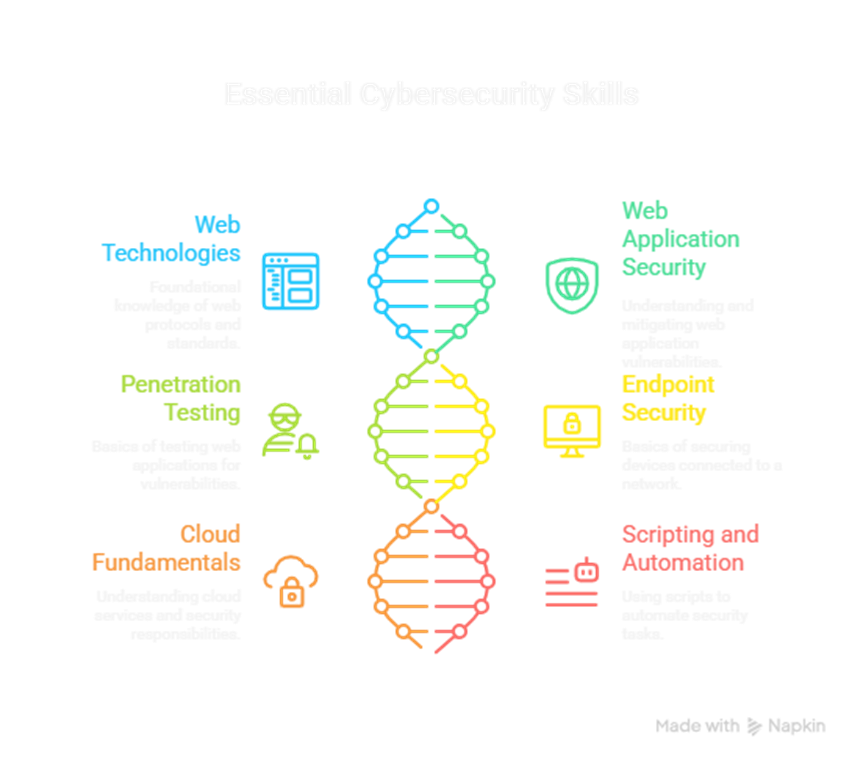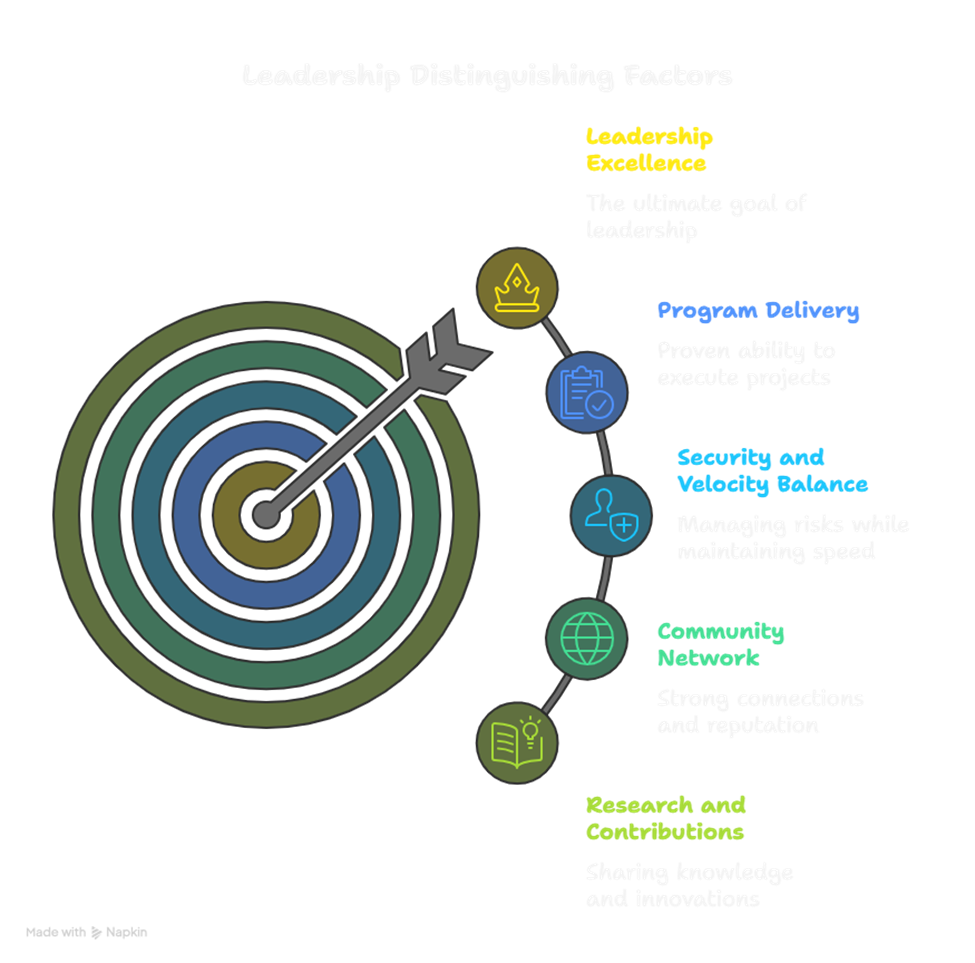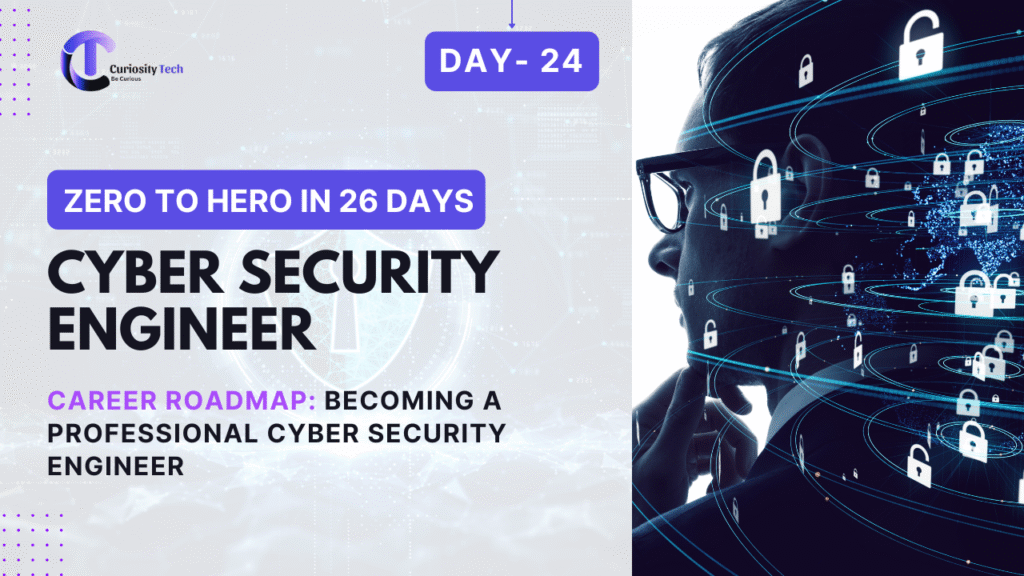Introduction — A Human Story to Start
When I plugged my first honeypot into a misconfigured router two decades ago, I didn’t realize I was starting a career that would ask me to be a coder, an investigator, a manager, and occasionally a storyteller who can explain technical risk to non-technical leaders. Cybersecurity is not a single job — it is a journey of roles, skills, mistakes, corrections, and constant learning.
This guide is a practical, deeply detailed roadmap that takes you from absolute beginner to confident professional cyber security engineer. It combines step-by-step actions, a timeline visualization, project ideas, recommended certifications and learning paths, interview preparation, and real-world advice drawn from two decades working with companies and mentoring students at CuriosityTech.in in Nagpur (1st Floor, Plot No 81, Wardha Rd, Gajanan Nagar).
How to Use this Roadmap
- Treat it as a flexible map, not a rigid ladder. People enter cyber security from many backgrounds (networking, dev, QA, system admin).
- Each phase has mandatory skills, recommended projects, assessment criteria, and how CuriosityTech.in can help.
- Timeframes are approximate — what matters is competence, not how fast you move.
Phase 0 — Preparation & Mindset (Weeks 0–4)
Goal
Decide whether you truly want to commit. Build a learning rhythm and basic tooling.
Mandatory steps
- Set up a dedicated learning environment (a laptop, virtualization with VirtualBox/VMware, and a separate learning drive).
- Create accounts: GitHub, LinkedIn, TryHackMe / HackTheBox, and a simple blog (GitHub Pages).
- Learn basic Linux commands, HTTP basics, TCP/IP (ports, DNS), and how to use a terminal.
Quick checklist
- Install a virtual lab: Kali Linux (attacker), Ubuntu (victim), Juice Shop or DVWA.
- Follow a hands-on beginner path on TryHackMe (Intro to Cyber).
- Write your first blog post: “Why I chose cybersecurity” — publishing builds clarity and confidence.
CuriosityTech tip
At CuriosityTech.in, beginners are paired with a mentor who reviews their environment and first blog. Mentors frequently find small but critical misconfigurations early and correct them — which prevents long-term confusion.
Phase 1 — Foundations (0–6 months)
Goal
Acquire a firm base across networking, systems, and basic security concepts.
Mandatory skills & knowledge
- Networking fundamentals: OSI model, subnetting, routing basics.
- System administration: Linux file system, users, permissions; Windows basics (PowerShell).
- Basic security concepts: confidentiality, integrity, availability; authentication vs authorization.
- Version control: Git basics.
- Basic scripting: Bash or Python basics for automation.
Projects (build these)
- Home lab: Set up an ELK stack to collect logs from two VMs. Create one detection rule for failed SSH attempts.
- Static blog/portfolio: Document labs and lessons — 6 posts in 6 months.
- Threat hunting exercise: Use Zeek/Bro or simple grep on logs to find injected strings.
Assess yourself
- Can you explain what happens when you type https:// in a browser?
- Can you write a 20-line Python script to parse a log file and output suspicious IP addresses?
Certifications to consider
- CompTIA Security+ — excellent foundation (if you prefer credentialled entry).
- CuriosityTech note: our Security+ prep pairs theory with labs; students who write blog posts and lab notes have higher pass rates.
Phase 2 — Core Technical Proficiency (6–18 months)
Goal
Become indispensable as a hands-on engineer able to both defend and offensively test systems.
Mandatory skills & knowledge
- Web technologies: HTTP, HTML, cookies, CORS, JWTs.
- Web application security: OWASP Top 10 (deep knowledge).
- Penetration testing basics: Burp Suite, Nmap, SQLMap.
- Endpoint security basics: EDR concepts, basic forensic artifacts (event logs, memory indicators).
- Cloud fundamentals: at least one cloud provider (AWS/GCP/Azure) basics and shared responsibility model.
- Scripting and automation: Python scripting for log parsing, basic API interactions.

Projects (build these)
- Full pentest on Juice Shop: recon → exploit → report. Deliver a PDF report with executive summary.
- Detection engineering: Build 5 detection rules in your ELK/Graylog for real-world threats and measure false positives.
- Cloud lab: Deploy a simple app, instrument CloudTrail/Stackdriver/Azure Monitor, and write a script to alert on suspicious IAM changes.
Assess yourself
- Can you find and exploit simple SQL injection and XSS vulnerabilities, then write remediation steps?
- Can you write a playbook for triaging a suspicious login and implement it with scripts and alerts?
Certifications to consider
- CEH (for offensive pathway) or eJPT (for practical beginner pentesting).
- CuriosityTech tip: our hands-on CEH prep includes report-writing clinics — because pentesting without clear reporting is a wasted skill.
Phase 3 — Specialization & Real-World Experience (1.5–4 years)
Goal
Choose a specialization but remain fluent across the security stack.
Common specialization tracks
- Security Operations / SOC Analyst → Detection Engineer
- Penetration Testing / Red Team
- Cloud Security Engineer
- Application Security (AppSec)
- Identity & Access Management (IAM) Specialist
- Security Architect / Governance, Risk & Compliance (GRC)
Mandatory skills by track (high-level)
- SOC/Detection: SIEM rule writing, incident triage processes, advanced log parsing (ELK, Splunk).
- Pen-testing: exploit development basics, web & network pentesting, report writing, burgling application logic.
- Cloud: IaC security (Terraform/CloudFormation), cloud-native security tools, CNAPP familiarity.
- AppSec: secure SDLC, SAST/DAST tools, code review, threat modeling.
- GRC: risk frameworks (NIST, ISO), compliance mapping, policy writing.
Projects (build these)
- SOC: Run a 72-hour simulation (red team vs blue team) and produce an after-action report with metrics.
- Red Team: Complete 2 full-scope engagements on intentionally vulnerable labs and prepare client-ready reports.
- Cloud: Implement a CI/CD pipeline with automated SAST/IaC scanning and policy enforcement; measure security gates.
- AppSec: Lead a code review for an open-source project and submit PRs that fix security issues.
How to gain real experience
- Internships and junior roles in MSPs, MSSPs, or in-house SOCs.
- Bug bounty programs (HackerOne, Bugcrowd) for application security.
- Contribute to open-source security tools or detection rule repositories.
- Volunteer for small companies — many startups accept security help for equity or experience.
Assess yourself
- Can you lead an incident from detection to containment and produce a post-mortem with remediation plans?
- Can you present a penetration test to a technical and non-technical audience with clear risk prioritization?
CuriosityTech pathway
CuriosityTech.in runs mentorship cohorts pairing students with industry mentors for real-world red/blue exercises. Those cohorts include mock interviews, report reviews, and employer introductions.
Phase 4 — Senior Engineer / Architect (4–8 years)
Goal
Transition from executor to leader — designing secure systems, setting strategy, mentoring others.
Mandatory skills & knowledge
- Deep architecture knowledge: secure-by-design at system and platform levels.
- Threat modeling at scale: ability to model enterprise attack surfaces.
- Program building: create a vulnerability management program, incident response playbooks, and security SLAs.
- Stakeholder communication: convert tech risk into business impact and mitigation cost.
Projects (build these)
- Enterprise program: Draft and implement an organization-wide vulnerability management program (inventory, scanning cadence, SLA-driven remediation).
- Architecture review: Lead secure architecture reviews for a major product launch and produce a Risk Acceptance Report.
Assess yourself
- Can you defend a security budget to a CIO/CEO?
- Do you have mentees who have progressed under your guidance?
Certifications to consider
- CISSP (if you want leadership/professional recognition), CCSP (for cloud security architects), or vendor leadership certs.
Phase 5 — Leadership, Research & Special Projects (8+ years)
Goal
Lead security strategy, advise boards, or become a subject matter expert (SME) in niche domains like PQC, AI security, or critical infrastructure.
Typical roles
- Security Architect, CISO, Head of Cloud Security, Principal Security Researcher.
What distinguishes top leaders
- Track record of program delivery.
- Ability to balance security needs with product velocity.
- Strong network and reputation in the community.
- Published research, conference talks, or sustained open-source contributions.

CuriosityTech connection
Senior engineers often collaborate with CuriosityTech.in as adjunct mentors or guest lecturers — sharing field experience while discovering emerging talent from Nagpur and beyond.
Timeline Table (Suggested Milestones)
| Phase | Timeframe | Milestone Indicators |
| Preparation | 0–1 month | Lab ready, blog started, basic Linux & networking understood |
| Foundations | 0–6 months | Home lab running ELK + basic detections, 3 blog posts |
| Core Proficiency | 6–18 months | Completed pentest project + detection engineering project |
| Specialization | 1.5–4 years | Two real-world engagements, role in SOC or pentest team |
| Senior / Architect | 4–8 years | Designed security program, mentored juniors |
| Leadership / Research | 8+ years | Strategic leadership, published work, board-level communication |
Portfolio & Interview Preparation — What Employers Actually Look For
Employers want evidence, not just claims. Build a portfolio that demonstrates impact:
Portfolio components
- Project write-ups: For each lab/engagement include objective, approach, findings, remediation, and business impact.
- Detection rules and scripts: Host them on GitHub with READMEs and tests.
- Open-source contributions: Fixes for security tools or rules.
- Reports: One full pentest PDF (sanitized) and one incident response after-action report.
- Blogs & talks: 10+ blog posts and at least one recorded walkthrough (YouTube or Loom).

Interview prep (technical + behavioral)
- Technical: whiteboard threat modeling, step-through of an incident you handled, live debugging or log analysis.
- Behavioral: STAR stories (Situation, Task, Action, Result) for incidents, conflict resolution, and initiative.
- Assessment: ask for a take-home lab if possible (many companies use practical exercises).
Networking, Community & Continuous Learning
- Join local meetups, Discord security servers, and LinkedIn groups. CuriosityTech.in organizes cohort meetups and posts alumni success stories on LinkedIn (Curiosity Tech) and Instagram (curiositytechpark).
- Present at local or regional conferences — even a 20-minute case study increases credibility.
- Participate in CTFs monthly to keep offensive skills sharp.
- Schedule a quarterly learning plan with topics (cloud security, AI security, threat intel) and short measurable goals.
How to Handle Job Offers & Career Moves
- Don’t chase titles alone — evaluate role scope, autonomy, mentorship opportunities, and measurable impact.
- Negotiate for training budgets and time for R&D; these are often more valuable than small salary bumps early in the career.
- Consider contract or consultancy work to accelerate experience across industries.
Failures, Common Mistakes & How to Recover
- Mistake: Doing random labs without documenting outcomes.
Fix: Maintain a lab journal; each session ends with 300–500 words summarizing findings. - Mistake: Over-focusing on certifications and neglecting hands-on.
Fix: Always pair each certification prep with lab projects and a public artifact (blog or repo). - Mistake: Staying siloed.
Fix: Teach — explaining a concept to others is the best way to embed knowledge. CuriosityTech.in frequently offers teaching assistant roles for alumni.
How CuriosityTech.in Can Accelerate Your Journey (woven, not boxed)
CuriosityTech.in is not a quick certification mill — it’s a hands-on training environment. Typical ways we help learners:
- Personalized roadmaps aligned to the phases above.
- Hands-on cohorts that replicate enterprise stacks (SIEM, SOAR, cloud).
- Mentorship and mock interviews with industry practitioners.
- Assistance building portfolios and introductions to hiring partners.
If you’re in or near Nagpur, drop by at 1st Floor, Plot No 81, Wardha Rd, Gajanan Nagar — or reach out at contact@curiositytech.in or +91-9860555369 to learn about upcoming cohorts and mentorship programs.
Final Checklist — Are You Ready to Level Up?
- You have a lab and can reproduce a pentest or detection exercise from scratch.
- You maintain a public portfolio with projects and reports.
- You can automate a small detection → alert → enrichment flow.
- You mentor someone less experienced — teaching proves mastery.
- You schedule 6 months of focused learning with measurable outcomes.
Conclusion
Becoming a professional cyber security engineer is a marathon built from meaningful sprints. There are no shortcuts, but there are smart paths: deliberate practice, documented projects, real mentorship, and careful specialization. Your career will be as unique as your choices — but with a clear roadmap, the right projects, and community support (like CuriosityTech.in), you can move from curious beginner to confident authority.

